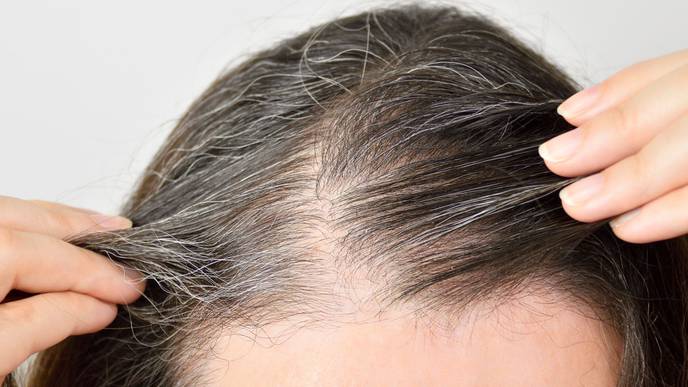ReachMD
Be part of the knowledge.™Coaxing Hair Growth in Aging Hair Follicle Stem Cells

· Regulating cell mechanics stimulates hair growth in mice
· Next step will be testing if delivering microRNA via nanoparticles grows hair
· Potential for human hair growth
CHICAGO --- Just as people’s joints can get stiff as they age and make it harder for them to move around, hair follicle stem cells also get stiff, making it harder for them to grow hair, reports a new Northwestern Medicine study.
But if the hair follicle’s stem cells are softened, they are more likely to produce hair, the scientists found.
Northwestern scientists discovered how to soften up those stem cells to enable them to grow hair again. In a study in mice published this week in PNAS, the investigators report that they can soften the stem cells by boosting the production of a tiny RNA, miR-205, that relaxes the hardness of the cells. When scientists genetically manipulated the stem cells to produce more miR-205, it promoted hair growth in young and old mice.
“They started to grow hair in 10 days,” said corresponding author Rui Yi, the Paul E. Steiner Research Professor of Pathology and professor of dermatology at Northwestern University Feinberg School of Medicine. “These are not new stem cells being generated. We are stimulating the existing stem cells to grow hair. A lot of times we still have stem cells, but they may not be able to generate the hair.
“Our study demonstrates the possibility of stimulating hair growth by regulating cell mechanics. Because of the potential to deliver microRNA by nanoparticles directly into the skin, next we will test whether topically delivered miR-205 can stimulate hair growth first in mice. If successful, we will design experiments to test whether this microRNA can promote hair growth potentially in humans.”
This study was conducted in genetically engineered mouse models. The scientists used advanced microscopy tools, including atomic force microscopy, to measure the stiffness and two-photon microscopy to monitor cell behaviors in live animals.
Other Northwestern authors include Jingjing Wang, Yuheng Fu and Kathleen Green.
The article is titled “MicroRNA-205 promotes hair regeneration by modulating mechanical properties of hair follicle stem cells.”
This study was funded by the National Institute of Arthritis and Musculoskeletal and Skin Diseases grants AR066703, AR071435, AR043380, AR041836 and P30AR075049 of the National Institutes of Health.
Journal
Proceedings of the National Academy of Sciences
Method of Research
Experimental study
Subject of Research
Animals
Article Title
MicroRNA-205 promotes hair regeneration by modulating mechanical properties of hair follicle stem cells
Article Publication Date
22-May-2023
Disclaimer: AAAS and EurekAlert! are not responsible for the accuracy of news releases posted to EurekAlert! by contributing institutions or for the use of any information through the EurekAlert system.
Facebook Comments